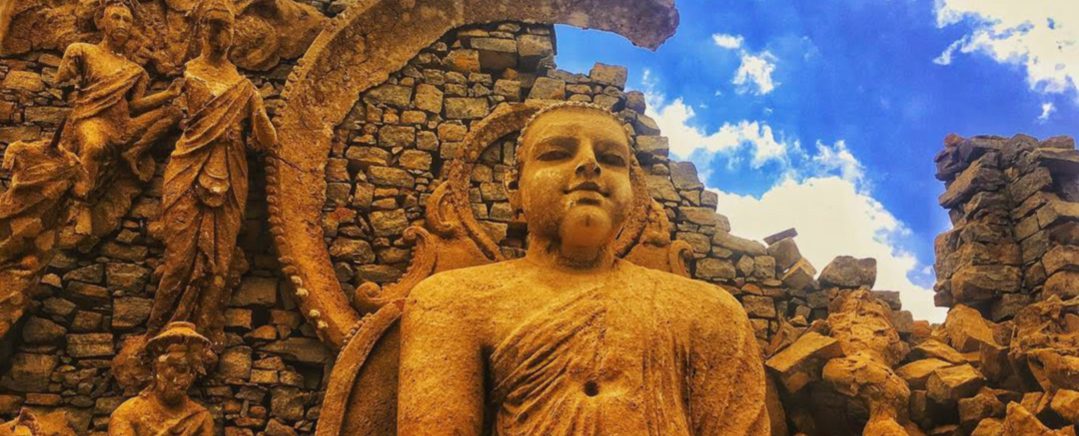Submerged in water during the rains and emerged in sunshine during the drought – this majestic, ancient temple located in the Kotmale reservoir has a heap of fans!
It is a bizzare sight indeed – visitors gathered around the reservoir bed of Kotmale to observe the half-visible temple, strolling through the crumbling, yet elegant Kadodara Viharaya and awing at its antique architecture.
This Buddhist Temple is situated in Kadodara, Nuwara Eliya District of Sri Lanka.When the Mahaweli Development Program constructed the Kotmale Dam in 1979, the Kadodara Viharaya was abandoned. The ruins of this Temple are visible when the Kotmale Reservoir has low water levels.
With the construction of this Dam, 57 villages and 54 religious places in the Kotmale area, including Tispane and the Kadodara Hills, were also submerged by the year 1985. The people of these ancestral villages were relocated to other areas. Most of the ruins of temples that were submerged no longer exist though. In compensation for and to symbolize the loss of these religious shrines as a result of the Kotmale Reservoir construction, the Mahaweli authorities constructed a bubble shaped Stupa known as the Mahaweli Maha Seya on the summit of the Kadodara Hill, overlooking the Kotmale Reservoir, which is second in height to the great Ruwanwelisaya of ancient Anuradhapura.
Kotmale is a prominent historical place you would want to visit during your cultural tour of Sri Lanka. In the central highlands, Malaya Rata is what ancient Kotmale was known as – where Prince Gemunu, who went on to become King Dutugemunu, made his mark. He fled from Ruhun Rata to Malaya Rata. During this period, Sinhalese villagers of Kadodara village built the Kadodara Viharaya, on the banks of the Kotmale Reservoir. This is an important tributary of the Mahaweli River and is a significant historic site in Kotmale during the early 1900s. Worshippers during this period would have never even dreamed that in about 50 years, the river will engulf their places of worship. Since then, it is a hide and seek game with the temple structure – under water when it rains and visible when the rains are at a halt – thereby giving it the name ‘hiding temple’.
When the magical Temple surfaces, visitors flock together in hundreds, offering flowers and obtaining blessings. In fact it is now a popular backdrop for selfies amidst the millennial generation of local and foreign visitors. The villagers whose villages were submerged still have strong ties with the Kadodara Viharaya. It is during the months of March and April every year when the water level goes to all-time lows and the crumbling stone temple comes back to visibility. Villagers are always eagerly waiting for these months to gather around and be amazed at the majestic remnants of the decaying Buddha statue; with their memories going back in time when the temple called out for faithful prayers.

